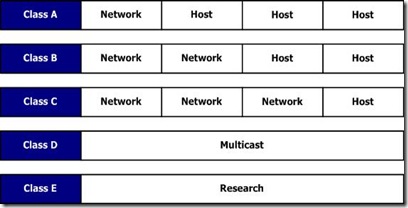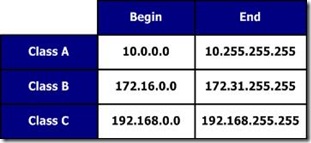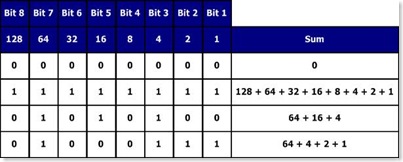How to find the Subnet Mask, Network Address, Broadcast, First and Last Host addresses:
Despite this is a very basic topic, I get ALOT of questions from peaple with CCNA and even CCNP certification asking me HOW to find a Subnet, Broadcast address and so on! Oh my! I wonder which book they´ve used for their studies! Or even more, if they´ve used a book at all! :)
So let´s get a little brief...
The IPv4 used in a Workstation, any Router Interface (running IPv4) is composed of 32 bits, in 4 fields of 8 bits, like this:
XXXXXXXX.XXXXXXXX.XXXXXXXX.XXXXXXXX
There are 5 Classes of IPv4 Addresses, known as Class A, B, C, D (Multicast) and E (Research).
Convert an IP Address in Decimal to it´s Binary "source" it´s really simple, just follow the instructions here, and you´ll master it faster than you think!
Classes of IP Address:
Addressing Basics:
In the following picture you can see that ANY Class A Address starts with 0 followed by 7 bits that can be either 0 or 1, that gives us a range from 0 to 127.
Class B starts with 10 + 6 bits of any value (0 or 1) and Class C starts with 110 + 5 bits (1 or 0).
Multicast and Research are reserved and cannot be used in a workstation, or a router interface.
Reserved Addresses:
Inside each class (A, B and C), we do have some Reserved Address that we can use for example, to configure our office network, without publishing those address to the internet, think of those address live Private Addressing, that you (your company) and only your company will be able to see and share it among other offices, but not an external customer for instance.
Examples:
Here follows some examples so you can pratice a bit how to convert an IP Address:
If you have any doubt, just let me know! I´ll be glad to clear things out!













No comments:
Post a Comment